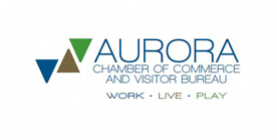Blog

Energy Audit
Audit Preparation
Several weeks ago this author was approached by his church officials and asked if Independent Energy Consultants would perform an energy audit on the church's facilities. As I prepare to conduct the audit, I have chosen to use this project as the basis for this newsletter. Shown below is an outline of the areas that will be examined and are likely to produce suggestions for improvement. When performing a facility audit it is important to do your homework before arriving so you come prepared and make the best use of everyone's time.
Audit Outline
Utility Bill review.
Any audit should begin with an offsite review of utility bills for natural gas, electric, water, sewer, etc. In this review we are looking to:
· Verify bills were calculated properly;
· Determine if lower rates are available from the utility company or deregulated marketers;
· Check for sales tax exemptions when possible;
· Identify power factor penalties, ratchet demand penalties that can be eliminated or reduced;
· Calculate load factor to see if equipment is being used at the most advantageous time, and
· Identify anomalies in usage vs. prior months or the same period in previous years.
Benchmarking. Benchmarking against similar facilities in a similar climate can help spot poor performing facilities that need attention and also identify good performing facilities where lessons can be learned. A benchmarking report will produce statistics such as:
· Energy consumption per square foot of conditioned space for electric and natural gas;
· Dollars spent per square foot of conditioned space for electric and natural gas; and
· Energy Use Index (EUI) is a measure that looks at how efficient a building is when combining all fuel sources.
Heating and Ventilation System. HVAC systems are a prime candidate for energy conservation.
· Look for opportunities to employ variable speed drives so that equipment runs only at the speed needed. This is often an effective technique for fan motors in ventilation systems and pump motors in fluid cooling systems.
· Make sure damper controls are connected, lubricated and functioning properly.
· Install volume controlled ventilation (VCV) controls with CO2 detectors in the ductwork. Ventilation in this facility is designed to handle approximately 1,000 people at times, but often only a few office staff are present. Running systems at maximum capacity, when occupancy is low, is not needed and can lead to temperature control problems.
· Look for signs of mold formation particularly around windows. Install data loggers to measure relative humidity in suspect areas.
Lighting. Lighting will undoubtedly be a major driver of electric bills. We will look for opportunities to use more efficient lighting in various spaces throughout the church, parish center and office spaces. It is important to recognize the need for fixture aesthetics and light coloring in certain spaces.
· Control lights with occupancy sensors spaces that are not frequently occupied, e.g., restrooms and storage rooms.
· Replace incandescent bulbs with compact fluorescent (CFL) bulbs.
· Replace T-12 fluorescent bulbs with T-8 fluorescent bulbs and electronic ballasts in offices and kitchen areas.
· Replace old Emergency Exit signs with LED technology.
· Look for alternatives to high pressure sodium lights in the sanctuary. The goal is to gain efficiency without sacrificing appearances or suggesting costly retrofits in bad economic times.
· Place outdoor lighting on timers or photosensors.
· Take lighting measurements at various locations to determine adequate lighting levels for the particular space use.
· Click here to read a previous newsletter devoted to lighting technology.
Building envelope. We will look closely at windows, doors and any other penetration through the building envelope.
· The use of an infrared camera will enable us to identify air leakage and missing or damaged insulation.
· We will also use an infrared camera to identify "hotspots" in electrical panels, pump/motor bearings, etc. This can not only save energy, it can identify a safety hazard before it can cause serious problems.
Shut it off, close it, lower the setpoint. Shutting equipment off is the ultimate energy conservation measure. In a church, this primarily means turning off lights and office equipment.
· If you are going away from your computer for 2 hours put it in sleep mode, if you are leaving for the night, shut it down.
· Lights can be turned off or dimmed. Take advantage of natural lighting and use occupancy sensors or photo sensors where practical.
· Domestic hot water setpoints are often much higher than needed and can also create a risk of scalding.
· Care needs to be taken for equipment that may have considerable start up costs and/or long start up times. In these instances seek a setback mode of operation so conditioned space is ready to go when people arrive.
Maintain it. Well maintained equipment uses less energy and lasts longer. Typical preventative maintenance should include.
· Clean/replace filters
· Lubricate equipment to reduce friction
· Caulk windows
· Weather strip doors
· Repair damaged insulation
· Boiler efficiency - with the aid of a combustion analyzer you can determine boiler operating efficiency. Maintenance staff can adjust fuel and excess air flows; and clean burners as necessary to achieve efficient operation. A combustion analyzer can also be used to determine the efficiency of domestic hot water heaters.
Ability to combine meters. It may make sense to combine multiple electric meters if the wiring change is not too costly. Combining meters can eliminate:
· Multiple monthly service charges;
· Peak demand charges for the combined account. Adding the energy loads of multiple accounts may not increase the peak demand, may improve load factor, and may make you eligible for a lower cost rate code from the utility. A good example for a church would be combining outdoor lighting if separately metered.
Purchase Energy Star equipment. When cost justified or when replacing worn out equipment the church should buy energy efficient:
· Computers and copiers
· Kitchen appliances - refrigerators, freezers, ranges, microwaves, dishwashers, etc.
· Televisions and A/V equipment
Here is a link to energy star appliances to give you an idea of how much energy specific appliances consume and what is your savings potential.
Contact Independent Energy Consultants for help with your energy purchases, and all your energy management needs.



